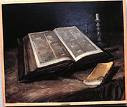
A Review and comment on "Jack Kerouac Selected Letters 1957 - 1969".
For any biographer or historian the original letters of the subject is a valuable and extremely important source of information in order to gain insight into the time period, and/or the person under study.
In part 2 of Kerouac's Selected Letters, the text truly gives the student or curious, a penetrating look into this enigmatic and ultimately tragic American author. For many, Jack Krerouac represents an important shift in American literature but also a significant historical (literary) mark of an entire generation. Ann Charters, (Kerouac's first biographer) editor of this volume, has done a pain-staking and beautiful job with this book - we come to know him as a man, the artist and his concerns; generosity, relationships; his struggle with the demon drink and, most importantly, the development of his unique prose style, leading to his now iconic status.
The letters begin in the year (1957) when "On the Road" was published. At this stage of Kerouac's life, from the tone and content of his letters, he is excited, finishing incomplete manuscripts, organizing "get- togethers', writing his publisher and working on new projects. As the years progress, sadly, his drinking accelerates, he becomes more and more misanthropic and, in the end, paranoid. It is true - it was the booze that killed his body but it was fame as an author that murdered his soul. More than likely, it was both.
Ann Charters suggests that these letters were experiments in style and possible new ideas for future projects, his friends perhaps 'sounding boards' where the reader can see his development of what is famously known as "spontaneous prose".
Kerouac was also a prolific poet. Some call his "novel", Mexico City Blues, one long, epic poem. This particular book, for me, was difficult to read, until viewing the piece as poetry - it was then the penny dropped and the book became much easier to read.
An example of a little poem written for Stella Sampas to Gary Snyder from Japan:
"A poem to Stella Sampas?"
"After the shower,
Among the drenched roses,
The bird thrashing in the bath
After the shower,
my cat meowing
On the porch"
It has always been my opinion that Jack's poetry is underrated, but that's neither here nor there.
Kerouac wanted his letters to be published thus he kept copies in neat files by year.
Close to the end of Jack's life just prior to writing and eventually publishing "Vanity of Dulouz" (1968), he narrates that by day he would write like a demon possessed, and by night, almost akin to some strange ritual, burn his day's work, page by page, only to start again the next morning. One can interpret this action in many ways: the Art fot Art's sake sensibilty; a process of purification as an artist or perhaps an experiment with the creative process itself. Who knows? However, the images in my minds eye of this action, are strong with an unidentifiable meaning.
Anyone interested in American literature, pursuing a research project or wanting greater insight into the man, these letters are an invaluble historical document revealing the inner workings of the "Beat Generation" that continues to affect most modern writing to present time.



